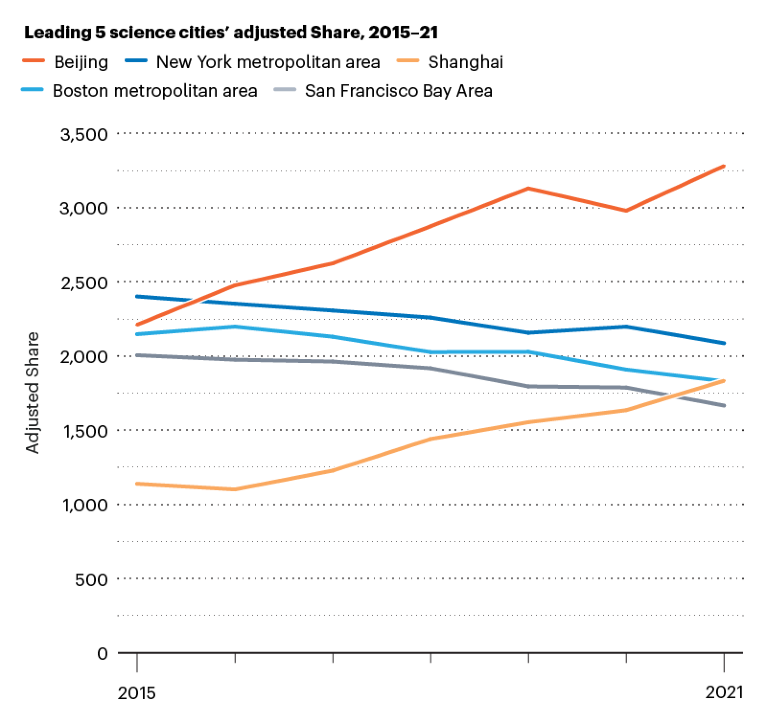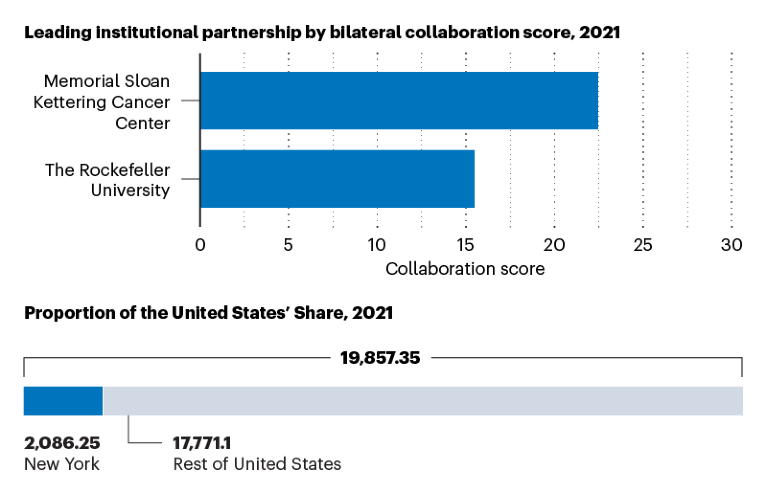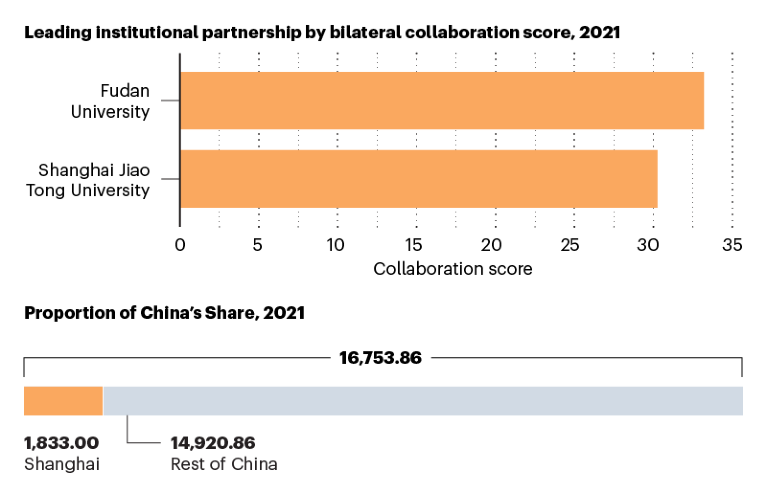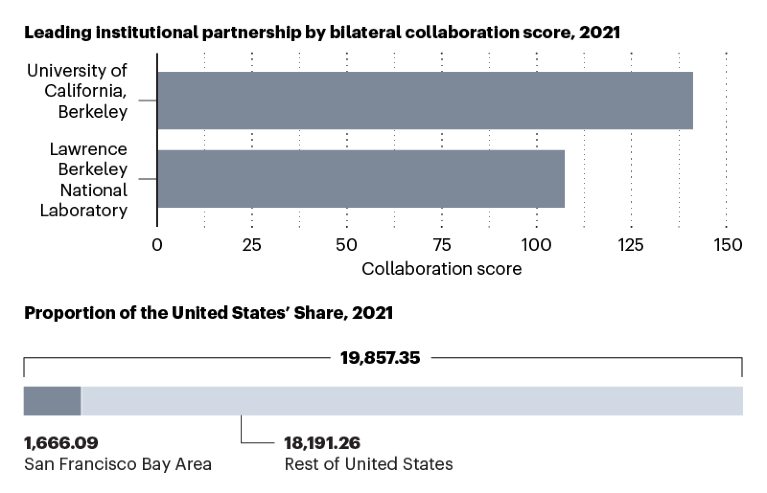Beijing and Shanghai have made considerable progress since 2015, gaining on and overtaking some of the United States’ top science cities. Boston, New York and San Francisco have meanwhile fallen slightly in their output of science papers within the Nature Index. Changes to each of the leading five science cities’ adjusted Share since 2015 are shown below, along with a breakdown of the top collaborating institutions within each city. Because large network organizations, such as the Chinese Academy of Sciences, span multiple cities, we have counted their constituent bodies instead when calculating the number of institutions in the top 500 of the Index. All population statistics date from 2020. GDP per capita figures in Chinese cities date from 2021 and in US cities date from 2019. All currency data expressed in US dollars.

Sources: Nature Index, National Bureau of Statistics of China, Statista, Science Cities (Savills, 2021), US Census Bureau; data analysis: Bo Wu; infographic: Tanner Maxwell, Simon Baker and Benjamin Plackett
1. Beijing
Population: 21.9 million
GDP per capita: $27,253
Average scientist salary: $34,830
Number of institutions in Nature Index top 500: 23
China’s capital has rapidly grown its adjusted Share in recent years to cement its position as the world’s leading science city.

Sources: Nature Index, National Bureau of Statistics of China, Statista, Science Cities (Savills, 2021); data analysis: Bo Wu; infographic: Tanner Maxwell, Simon Baker and Benjamin Plackett
2. New York metropolitan area
Population: 20.1 million
GDP per capita: $81,902
Average scientist salary: $70,770
Number of institutions in Nature Index top 500: 14
The Big Apple remains the top US science city, buoyed by the many research institutions based in the city; its leading collaboration is between the Memorial Sloan Kettering Cancer Center and The Rockefeller University.

Sources: Nature Index, Statista, Science Cities (Savills, 2021), US Census Bureau; data analysis: Bo Wu; infographic: Tanner Maxwell, Simon Baker and Benjamin Plackett
3. Shanghai
Population: 24.9 million
GDP per capita: $25,700
Average scientist salary: $36,550
Number of institutions in Nature Index top 500: 12
China’s second science city is rapidly growing its adjusted Share and has overtaken both the San Francisco Bay Area and Boston in recent years. If this pace of change continues, it seems likely that the city could also surpass New York in the coming years.

Sources: Nature Index, National Bureau of Statistics of China, Statista, Science Cities (Savills, 2021); data analysis: Bo Wu; infographic: Tanner Maxwell, Simon Baker and Benjamin Plackett
4. Boston metropolitan area
Population: 4.9 million
GDP per capita: $86,953
Average scientist salary: $83,830
Number of institutions in Nature Index top 500: 7
A strong performance in the life sciences from Boston’s well-established institutions such as Harvard University and the Massachusetts Institute of Technology helps to secure this city a spot in the leading five science cities

Sources: Nature Index, Statista, Science Cities (Savills, 2021), US Census Bureau; data analysis: Bo Wu; infographic: Tanner Maxwell, Simon Baker and Benjamin Plackett
5. San Francisco Bay Area
Population: 6.7 million
GDP per capita: $112,271
Average scientist salary: $94,170
Number of institutions in Nature Index top 500: 6
The potential of large-scale collaborations between universities and government institutions is showcased here by the University of California, Berkeley and the Lawrence Berkeley National Laboratory.

Sources: Nature Index, Statista, Science Cities (Savills, 2021), US Census Bureau; data analysis: Bo Wu; infographic: Tanner Maxwell, Simon Baker and Benjamin Plackett

